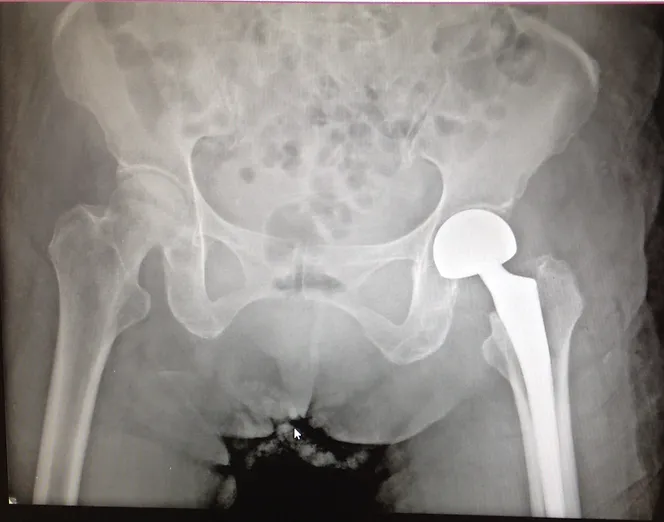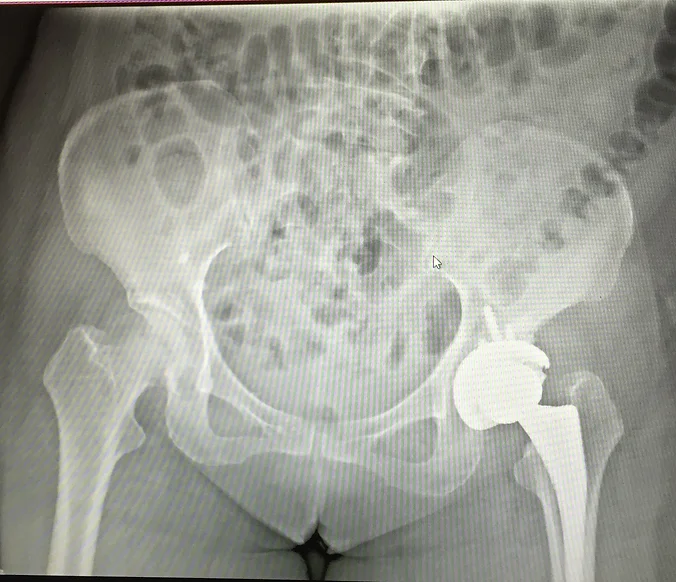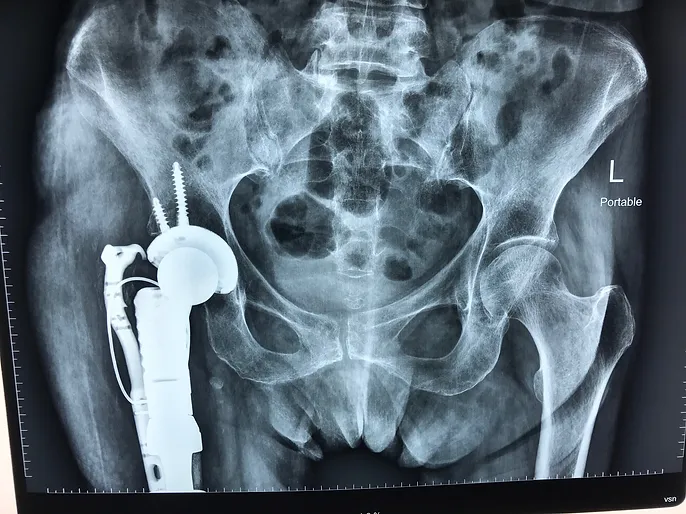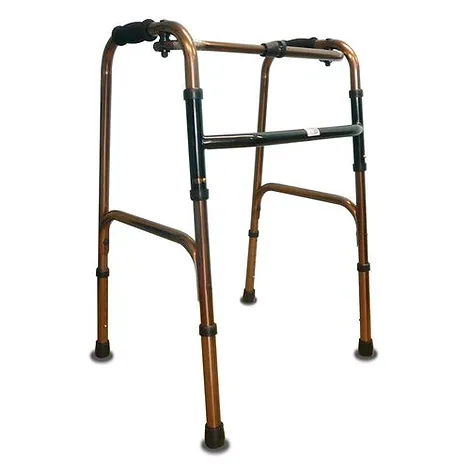Hip Replacement Surgery in Singapore

When hip pain becomes severe and limits your ability to enjoy everyday activities, hip replacement surgery in Singapore can offer a life-changing solution. This procedure provides relief from debilitating pain and restores mobility, allowing you to regain your independence and improve your overall quality of life. Hip replacement surgery is widely considered as one of the most successful treatments in the whole of medicine.
If you are struggling with hip pain that restricts your movement and affects your well-being, hip replacement surgery may be a viable answer.
What is Hip Replacement Surgery?
Also known as hip arthroplasty, hip replacement surgery is a surgical procedure that replaces a damaged hip joint with an artificial implant. This implant is designed to mimic the natural function of the hip joint, allowing for smoother, pain-free movement. It is particularly effective in treating conditions like hip osteoarthritis, Avascular Necrosis, and severe hip fractures, especially in elderly patients. In fact, the procedure boasts high satisfaction rates, with approximately 97% to 98% of patients reporting significant improvement in their hip pain and mobility after surgery.
Benefits of Hip Replacement Surgery
Hip replacement surgery offers a range of benefits that can significantly enhance your well-being and allow you to live a more active and fulfilling life.
Some key benefits include:
Pain Relief and Improved Mobility:
By replacing the damaged joint, hip replacement surgery significantly reduces pain and restores a wider range of motion in the hip.
Increased Activity, Independence, and Quality-of-Life:
With reduced pain and improved mobility, patients experience a better quality of life, enabling them to participate in daily activities and social interactions more comfortably.
Faster Recovery for Elderly Patients:
For elderly patients with hip fractures, hip replacement surgery often offers a faster recovery and better long-term outcomes compared to traditional fracture repair methods. This can help them regain their independence and mobility sooner.
Protecting Your Hip's Future:
Hip replacement surgery not only addresses your current pain and mobility issues but also plays a crucial role in protecting your hip’s long-term health. The modern hip implants used in the procedure are incredibly durable and long-lasting, which significantly reduces the likelihood of your hip deteriorating further and requiring more invasive surgeries down the line.

Who Needs Hip Replacement Surgery?
Hip replacement surgery is typically recommended for individuals with severe hip conditions that have not responded to conservative treatments. If you are experiencing significant pain and limitations in your mobility that have not improved using simple treatments, it might be time to consider this procedure.
Common indications for hip replacement surgery include:
- Persistent pain and stiffness in the hip joint due to osteoarthritis.
- Severe damage or fractures in the hip joint that limit movement and cause significant pain.
- Difficulty performing daily activities, such as walking, climbing stairs, or getting in and out of chairs.

Partial Hip Replacement, only on one side of the joint

Total Hip Replacement, on both sides of the joint
Types of Hip Replacement Surgeries
Total Hip Replacement
Total hip replacement is the most common type of hip replacement surgery. It involves replacing both the ball (femoral head) and the socket (acetabulum) of the hip joint with artificial components. This comprehensive approach is often used for patients with advanced osteoarthritis or significant joint damage.
Partial Hip Replacement
In partial hip replacement, also known as hemiarthroplasty, only the ball of the hip joint is replaced. This procedure is typically performed in cases of hip fractures where the socket portion of the joint is still healthy.
Revision Hip Replacement
Revision hip replacement is necessary when a previously implanted hip joint needs to be replaced due to wear and tear, loosening, or other complications. This complex procedure involves removing the existing implant and replacing it with a new one.

A highly complex Right Total Hip Replacement; the thigh bone has been replaced with prosthesis with the addition of a trochanter fixation plate
Hip Replacement Implants
The artificial implants used in hip replacement surgery are crucial to the success and longevity of the procedure. These implants are typically made of highly durable materials designed to withstand the forces and stresses of everyday movement.
Metal components, such as titanium alloys coated with hydroxyapatite, are commonly used for the stem and ball of the implant. Hydroxyapatite promotes bone growth and integration with the implant, ensuring stability. Polyethylene, a type of plastic, is often used for the socket liner, providing a smooth surface for the joint to move upon. These advanced materials and designs contribute to the longevity of hip implants, with studies showing that implants last for 15 years or more in 85-95% of cases. This durability provides patients with long-lasting pain relief and improved mobility.

Preparing for Hip Replacement Surgery
Before undergoing hip replacement surgery, a hip pain specialist in Singapore will conduct a thorough evaluation to ensure you are physically prepared for the procedure. This may involve blood tests, a chest X-ray, and an electrocardiogram (ECG) to assess your overall health and fitness for surgery.
Our surgeon will also provide you with specific instructions to follow in the days leading up to your surgery. This may include guidance on medications to continue or stop, dietary recommendations, and lifestyle adjustments to aid in your recovery.
What to Expect During Surgery
On the day of your surgery, you will be admitted to the hospital a couple of hours before the scheduled procedure. The hip replacement surgery itself typically takes about two hours, but you can expect to be in the operating theatre for three to four hours in total.
Our Orthopaedic doctors in Singapore utilise advanced surgical techniques and technologies to minimise complications and ensure the best possible outcome for your hip replacement surgery, so you can rest assured that you are in experienced hands.

Walking Frame
Hip Replacement Recovery Timeline
Post-Surgery Hospital Stay
Following your hip replacement surgery, you can expect to stay in the hospital for an average of four to five days. During this time, you will receive comprehensive care from our medical team and begin your rehabilitation journey. Physiotherapy will commence soon after surgery to help you start walking with the assistance of a frame.
Home Recovery
Once you are discharged from the hospital, you will continue your recovery at home. You will likely use a walking frame for the first one to three weeks, followed by a walking stick for up to one and a half months as you gradually regain strength and mobility. Full recovery typically takes two to fourmonths, during which you will continue with physiotherapy and gradually return to your normal activities.
Follow-Up Appointments
After your hip replacement surgery, you will have scheduled follow-up appointments with your surgeon to monitor your progress and ensure optimal healing.
These appointments typically take place at the following intervals:
Two Weeks After Surgery:
This initial follow-up assesses your wound healing and overall recovery progress.
One Month After Surgery:
This appointment focuses on evaluating your mobility, pain levels, and any potential complications.
Two Months After Surgery:
This check-up monitors your continued progress and addresses any concerns or questions you may have.
Four to Six Months After Surgery:
This appointment assesses your long-term recovery and provides further guidance on rehabilitation and activity levels.
Subsequent appointments will be scheduled based on your individual needs and recovery progress.

Rehabilitation and Post-Surgery Care
Rehabilitation plays a crucial role in your recovery after hip replacement surgery. It focuses on strengthening your muscles, improving your mobility, and restoring your hip’s function.
Physiotherapy will be an essential part of your rehabilitation programme. Your physiotherapist will guide you through specific exercises designed to improve your strength, flexibility, and range of motion. As you progress, you will gradually increase your activity levels, including walking, climbing stairs, and eventually returning to your normal daily activities.
For patients who require additional support during their recovery, step-down care options such as nursing homes or rehabilitation centres are available. These facilities provide a structured environment with professional care to aid in your recovery journey.
To ensure the success of your hip replacement surgery, it is important to follow these tips:
- Avoid squatting or deep bending on a long-term basis, as these movements can increase the risk of implant dislocation or loosening.
- It is also advisable to shower in the seated position for the first two weeks after surgery.
- Arrange for assistance or caretaker support for the first two weeks after surgery to help with daily tasks and ensure a smooth recovery.
Risks and Complications
While hip replacement surgery is generally safe and effective, like any surgical procedure, it carries potential risks and complications.
Common risks associated with hip replacement surgery include:
- Infection at the surgical site.
- Blood clots in the legs or lungs (deep vein thrombosis or pulmonary embolism).
- Dislocation or loosening of the implant.
- Cracks of the bone around the hip implant.
However, advancements in surgical techniques, implant design, and post-operative care have significantly reduced the incidence of these complications. Experienced surgeons and medical teams take every precaution to mitigate these risks and ensure the best possible outcome for your hip replacement surgery.
Cost of Hip Replacement Surgery in Singapore
The cost of hip replacement surgery in Singapore can vary depending on several factors, including the type of surgery (total vs. partial), the materials used for the implants, the length of your hospital stay, and the extent of post-surgery care required.
While hip replacement surgery can be a significant financial commitment, it is important to remember that it offers long-term benefits in terms of pain relief, improved mobility, and enhanced quality of life. Financial assistance schemes and insurance coverage options may be available to help make hip replacement surgery more affordable and accessible. Discuss your financial concerns with your healthcare provider to explore available options.
See our Hip Replacement Specialist in Singapore
If you are considering hip replacement surgery, it is crucial to consult with an experienced hip replacement specialist to discuss your individual needs and treatment options. The specialists at Centurion Orthopaedic Centre can provide personalised advice, assess your suitability for surgery, and guide you through the entire process. Seek timely treatment and take the first step towards regaining your mobility and enjoying a more active and fulfilling life.
Frequently Asked Questions About Hip Replacement Surgery
What activities should I avoid after surgery?
While hip replacement surgery significantly improves mobility, it is important to protect your new hip joint during the initial recovery phase. Your surgeon will provide specific guidelines on activities to avoid, but generally, you should avoid:
- High-impact activities such as running, jumping, or contact sports.
- Excessive bending or twisting of your hip.
- Heavy lifting or strenuous activities.
Can I live independently after surgery?
While it is normal to need some assistance in the initial weeks following surgery, hip replacement generally allows patients to regain their independence. Most individuals can return to living on their own once they have recovered sufficiently. Factors such as your overall health and the progress you make in rehabilitation will influence how quickly you can return to independent living.

Services
Medisave / Insurances
Treatments
Ankle Sprain & Treatment
Cartilage Repair Treatment
Bone Fracture Treatment
Alternatives to Knee Replacement
Knee Replacement Surgery
ACL Reconstruction Surgery
Knee Cartilage/Meniscus Tear Injury
Heel Spur Treatment
Hip Replacement Surgery
Hip Scope Surgery
Shoulder Scope Surgery
Ankle Ligament Surgery
Spinal Injection Therapy
Steroid Injection
Patient Resources


